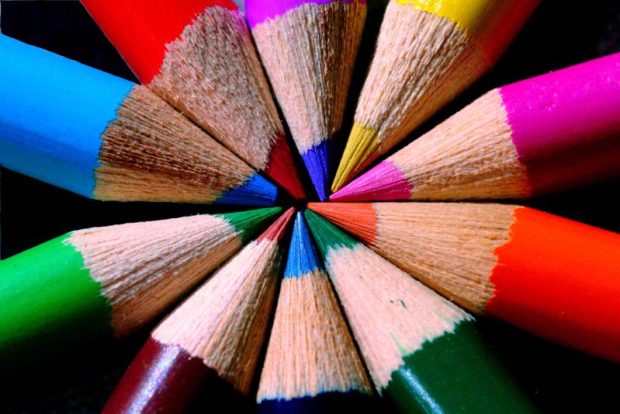Using Color Psychology to Boost Productivity

The following is a guest post by Veranda Hillard-Charleston. Her bio follows
Using Color Psychology to Boost Productivity
What if someone told you the perfect mood-booster to finish that big project could be found in your office décor rather than at the bottom of your coffee cup? The psychology of color, also known as chromology tells us just that.
Psychologists can help us determine which careers and jobs best suit our personalities, teach us how to effectively brand and market our companies, and guide us on how to improve communication between different work groups. Thanks to color psychology, we also have a few guidelines that help us decorate our workspaces for maximum productivity.
What is Color Psychology?
Color psychology is a concept based on how the brain perceives and responds to different colors in the environment. Color has the ability to influence our emotional, mental and physical states.
It’s likely you can think of a place where you always feel really energized. In the same line of thinking, there’s probably some place that makes you feel relaxed and at ease. The people in these environments may affect your energy levels but, chances are, the colors are affecting you, too.
Color and Mood
In the Western world, every mover-and-shaker from Fortune 100 and 500 countries to mompreneurs are learning to use color as a workplace advantage, stepping away from the conventional (and boring) white and gray color scheme.
The impact of color is not a universal truth. Different cultures and geographical regions have unique responses to color. Still, a recent Malaysian study showed that employers in the East are also taking greater notice to office color schemes, with blue being the most popular color for productivity. This demonstrates that while there may be cultural differences in our emotional responses to color, what gets us motivated to work and create is very similar.
As scientists conduct more studies, they are finding that certain colors evoke distinctive responses. Whether you’re the owner of a growing startup or simply rethinking your home office, choose the color scheme that aligns with your unique business needs.
Green
Based on this infographic by Taskworld, the color green, traditionally linked with nature, is known to promote calm while simultaneously maintaining efficiency. The color is ideal for workplaces where employees work long hours since it does not cause eye fatigue. Perfect for innovative work environments, green has been shown to inspire creative performance.
Blue
The #1 hue for productivity, blue packs a one-two punch for boosting stability and enhancing focus. Shown to improve study skills in students, this primary color arouses the brain and helps with concentration. Change up the tone for different energy levels—pale tones are calming while brighter tones emphasize liveliness.
Red
Commonly associated with fire and passion, red catches our attention and calls us to action, which is why office signs and important reminders work well in this color. This hue impacts your physical body, too. If you work in a field that involves physical activity, you may find that red can boost productivity by speeding up the heart rate and increasing blood pressure.
Yellow
The color of optimism, yellow is associated with positive emotions. This color can help you feel more confident, happy, and even have more fun. People who work in creative careers can benefit from incorporating this color into your work space. However, yellow can cause frustration or anxiety when used excessively or in the wrong tones. Opt for muted tones or choose a few key pieces in artwork or a vase to liven up your office for optimal productivity.
You don’t have to paint every wall of your space in these hues to enjoy the effects. You can boost your productivity simply by redesigning an individual workspace with the tone that inspires the most efficiency in you. Keep in mind that different workers may find productivity from varying colors depending on the type of work they do. Employers may be wise to choose a foundational color, such as blue, and then add in other pops of color as needed to stimulate or relax the work environment.
Author Bio
Veranda Hillard-Charleston is a freelance writer for a number of high profile publications. She received her Master’s Degree in Clinical Psychology from Northwestern State University of Louisiana. Veranda has more than five years of experience as a trained mental health professional. She welcomes comments on all her articles.
Images: Colors Capture Queen Color lights sima dimitric



